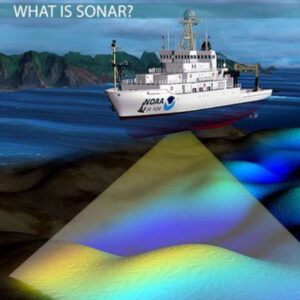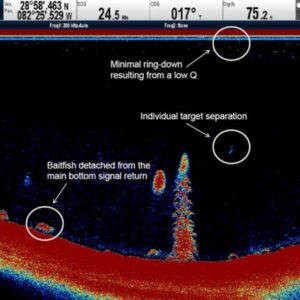Fishing has been a favorite pastime for generations, and with the advancements in technology, anglers now have access to powerful tools that can enhance their fishing experience. When it comes to finding the best fish finder under 200, one such tool that has revolutionized the way we locate and catch fish is the affordable yet efficient fish finder models available in the market. In this article, we will explore how a fish finder works effectively and how it can benefit anglers.
1) Sonar Technology:
 At the heart of every fish finder is sonar technology. Sonar, short for Sound Navigation and Ranging, is a technique that uses sound waves to detect objects underwater. The fish finder emits a sonar signal in the form of sound waves, which then travel through the water. When these waves encounter an object, such as a fish or structure, they bounce back to the fish finder’s transducer.
At the heart of every fish finder is sonar technology. Sonar, short for Sound Navigation and Ranging, is a technique that uses sound waves to detect objects underwater. The fish finder emits a sonar signal in the form of sound waves, which then travel through the water. When these waves encounter an object, such as a fish or structure, they bounce back to the fish finder’s transducer.
2) Transducer:
The transducer is a vital component of the fish finder. It converts electrical energy into sound waves and vice versa. When the sonar signal bounces back to the transducer, it receives the reflected waves and converts them into electrical signals. These signals are then processed by the fish finder’s internal computer.
3) Display:
The processed electrical signals are interpreted and displayed on the fish finder’s screen. The display typically shows a graphical representation of the underwater environment, with fish, structures, and the depth of the water being the most commonly displayed information. Modern fish finders often come with color displays, allowing anglers to distinguish between different objects and get a clearer view of what lies beneath the surface.
4) Depth and Bottom Contour:
One of the key features of a fish finder is its ability to determine the depth of the water and provide information about the bottom contour. This information is crucial for anglers as it helps them identify potential fishing spots. By knowing the depth and the type of bottom structure, such as rocks, weeds, or sandy areas, anglers can make informed decisions about where to cast their lines.
5) Fish Identification and Target Separation:
Fish finders are designed to identify fish and separate them from other objects in the water. The device uses advanced algorithms to analyze the received signals and determine if they correspond to fish. Additionally, fish finders with higher frequencies offer better target separation, meaning they can distinguish between individual fish and schools of fish more accurately. This feature allows anglers to locate and target specific fish species more effectively.
In conclusion, fish finders have become indispensable tools for modern anglers. By utilizing sonar technology, transducers, and advanced signal processing algorithms, these devices provide valuable information about the underwater environment. From identifying fish and determining their depth to revealing bottom contours, fish finders enable anglers to make informed decisions and increase their chances of a successful catch. So, if you’re a fishing enthusiast looking to take your angling game to the next level, investing in a quality fish finder is undoubtedly a wise choice.
